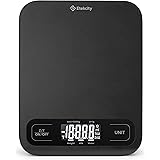What Is a Fireplace Insert? The Complete Homeowner’s Guide

Owala FreeSip Insulated Stainless Steel Water Bottle with Straw, BPA-Free Sports Water Bottle, Great for Travel, 24 Oz, Denim
$29.99 (as of November 11, 2025 19:01 GMT +00:00 - More infoProduct prices and availability are accurate as of the date/time indicated and are subject to change. Any price and availability information displayed on [relevant Amazon Site(s), as applicable] at the time of purchase will apply to the purchase of this product.)STANLEY Quencher H2.0 Tumbler with Handle and Straw 40 oz | Flowstate 3-Position Lid | Cup Holder Compatible for Travel | Insulated Stainless Steel Cup | BPA-Free | Plum
$26.55 (as of November 11, 2025 19:01 GMT +00:00 - More infoProduct prices and availability are accurate as of the date/time indicated and are subject to change. Any price and availability information displayed on [relevant Amazon Site(s), as applicable] at the time of purchase will apply to the purchase of this product.)Rubbermaid Brilliance Food Storage Containers BPA Free Airtight Lids Ideal for Lunch Meal Prep & Leftovers Set of 5 (3.2 Cup)
$27.99 (as of November 11, 2025 19:01 GMT +00:00 - More infoProduct prices and availability are accurate as of the date/time indicated and are subject to change. Any price and availability information displayed on [relevant Amazon Site(s), as applicable] at the time of purchase will apply to the purchase of this product.)Etekcity Food Kitchen Scale, Digital Grams and Ounces for Weight Loss, Baking, Cooking, Keto and Meal Prep, LCD Display, Medium, 304 Stainless Steel
$13.99 (as of November 11, 2025 19:01 GMT +00:00 - More infoProduct prices and availability are accurate as of the date/time indicated and are subject to change. Any price and availability information displayed on [relevant Amazon Site(s), as applicable] at the time of purchase will apply to the purchase of this product.)Alpha Grillers Meat Thermometer Digital - Instant Read Food Thermometer for Cooking and Grilling Stocking Stuffers for Men Christmas Gifts for Men
$13.58 (as of November 11, 2025 19:01 GMT +00:00 - More infoProduct prices and availability are accurate as of the date/time indicated and are subject to change. Any price and availability information displayed on [relevant Amazon Site(s), as applicable] at the time of purchase will apply to the purchase of this product.)Crock-Pot 7 Quart Oval Manual Slow Cooker, Stainless Steel (SCV700-S-BR), Versatile Cookware for Large Families or Entertaining
$47.99 (as of November 11, 2025 19:01 GMT +00:00 - More infoProduct prices and availability are accurate as of the date/time indicated and are subject to change. Any price and availability information displayed on [relevant Amazon Site(s), as applicable] at the time of purchase will apply to the purchase of this product.)KitchenAid Classic Multifunction Can Opener and Bottle Opener Easy to Use, Razor Sharp Stainless Steel Cutting Wheel, Soft Ergonomic Handles, Black
$14.35 (as of November 11, 2025 19:01 GMT +00:00 - More infoProduct prices and availability are accurate as of the date/time indicated and are subject to change. Any price and availability information displayed on [relevant Amazon Site(s), as applicable] at the time of purchase will apply to the purchase of this product.)Owala SmoothSip Slider Insulated Stainless Steel Coffee Tumbler, Reusable Iced Coffee Cup, Hot Coffee Travel Mug, BPA Free 12 oz, Vanilla Bean
$24.99 (as of November 11, 2025 19:01 GMT +00:00 - More infoProduct prices and availability are accurate as of the date/time indicated and are subject to change. Any price and availability information displayed on [relevant Amazon Site(s), as applicable] at the time of purchase will apply to the purchase of this product.)HydroJug Traveler - 32 oz Water Bottle with Handle & Flip Straw - Fits in Cup Holder, Leak Resistant Tumbler-Reusable Insulated Stainless Steel & Rubber Base - Gifts for Women & Men, Pink Sand
$34.99 (as of November 11, 2025 19:01 GMT +00:00 - More infoProduct prices and availability are accurate as of the date/time indicated and are subject to change. Any price and availability information displayed on [relevant Amazon Site(s), as applicable] at the time of purchase will apply to the purchase of this product.)ThermoPro TP19H Digital Meat Thermometer for Cooking with Ambidextrous Backlit and Motion Sensing Kitchen Cooking Food Thermometer for BBQ Grill Smoker Oil Fry Candy Instant Read Thermometer
$14.99 (as of November 11, 2025 19:01 GMT +00:00 - More infoProduct prices and availability are accurate as of the date/time indicated and are subject to change. Any price and availability information displayed on [relevant Amazon Site(s), as applicable] at the time of purchase will apply to the purchase of this product.)A fireplace insert is a self-contained heating unit designed to fit into an existing masonry or prefabricated fireplace opening. It transforms an inefficient, drafty fireplace into a powerful, efficient heat source by creating a sealed combustion system, dramatically improving heat output while reducing energy loss and emissions .
Fireplace Insert Basics: Definition and Core Components
At its core, a fireplace insert is essentially a fireproof box surrounded by steel or cast iron and fronted by insulated glass doors . Think of it as a high-efficiency stove custom-built to slide into your existing hearth. Unlike an open fireplace that sucks warm room air up the chimney, an insert is a closed combustion system .
The key components that make this possible include:
- Fireproof Box: The main body, typically made of durable steel or cast iron, built to withstand high temperatures .
- Insulated Glass Door: Creates an airtight seal to prevent heat loss and allows for safe viewing of the flames .
- Venting System: A dedicated flue (often a stainless-steel liner) that runs up the existing chimney to safely expel combustion gases .
- Blower/Fan System: Many models include a fan that actively circulates warm air from around the firebox back into the room, enhancing heat distribution .
- Decorative Surround: A custom flange that covers the gap between the insert and the original fireplace, creating a finished look .
Fireplace Insert vs. Traditional Fireplace: Why Efficiency Matters
The primary reason homeowners choose an insert is to solve the staggering inefficiency of traditional open-hearth fireplaces.
This dramatic jump in efficiency is why installing an insert is considered one of the most effective ways to reduce heating costs for the room it’s in, a concept known as zone heating .
The Different Types of Fireplace Inserts: Find Your Perfect Fit

Fireplace inserts are categorized by the fuel they use, each offering distinct advantages in terms of ambiance, convenience, and operational cost.
1. Gas Fireplace Inserts
Gas inserts are prized for their convenience and powerful heating. Powered by natural gas or propane, they provide instant, controllable heat with the push of a button or a remote control .
- How They Work: They use a direct vent system where a coaxial pipe draws outside air for combustion and expels exhaust back outside through the existing chimney .
- Best For: Homeowners seeking a low-maintenance, high-heat-output solution with the convenience of instant fire.
- Efficiency: 65% to 85% .
- Heat Output: 25,000 to 40,000 BTUs, enough to heat a medium to large room comfortably .
2. Wood-Burning Fireplace Inserts
For those who love the authentic crackle, smell, and sight of a real wood fire, a wood insert offers the ambiance of a traditional fireplace with modern efficiency .
- How They Work: These are essentially wood stoves without legs. They feature an airtight door and an advanced combustion system that burns wood more completely, producing more heat and less smoke .
- Best For: Purists who want the most authentic experience and have a ready supply of firewood.
- Efficiency: Around 50% for older models, but EPA-certified modern inserts can reach 60-80% efficiency .
- Heat Output: Can produce 65,000 to 85,000 BTUs, capable of heating 1,000 to 3,000 square feet .
3. Electric Fireplace Inserts
Electric inserts are the ultimate in easy installation and versatility. They require no venting, making them ideal for homes without a functional chimney or for apartments .
- How They Work: They use LED lights and reflective technology to create a realistic flame effect. The heating element operates independently, allowing you to enjoy the ambiance with or without heat .
- Best For: Easy ambiance, supplemental heat, and situations where venting is not possible.
- Efficiency: 100% at the point of use (all electricity is converted to heat), but electricity costs can be higher than other fuels.
- Heat Output: Typically up to 5,000 BTUs, suitable for warming a small to medium room .
4. Pellet Fireplace Inserts
Pellet inserts offer an eco-friendly and automated heating option. They burn compressed wood or biomass pellets, which are a renewable fuel source .
- How They Work: Pellets are automatically fed from a hopper into the firebox by an auger system. This allows for steady, thermostat-controlled heat with minimal manual intervention .
- Best For: Environmentally conscious homeowners who want the convenience of automated fuel feeding.
- Efficiency: Over 80%, making them one of the cleanest-burning options available .
- Considerations: They require electricity to operate the auger, blowers, and controls .
Top Benefits of Installing a Fireplace Insert
Investing in a fireplace insert delivers a wide array of benefits beyond simple aesthetics.
- Significant Energy Savings: By converting a heat-losing fireplace into an efficient heater, inserts allow you to practice zone heating. This means you can lower your home’s central thermostat and heat only the rooms you’re using, potentially cutting heating bills by up to 40% .
- Enhanced Safety: The sealed glass door contains sparks and embers, preventing them from jumping onto your flooring. This makes inserts a much safer option, especially for households with children or pets .
- Improved Air Quality: Modern inserts, particularly EPA-certified wood and pellet models, are engineered to burn fuel completely. This results in a massive reduction of smoke and particulate matter released into your home and the environment .
- Low Maintenance: Compared to the soot and ash cleanup of a traditional fireplace, inserts are far easier to maintain. Gas and electric models require very little upkeep, and many feature self-cleaning glass .
- Increased Home Value: A modern, efficient fireplace is an attractive feature for potential homebuyers. An insert upgrades an outdated feature into a valuable, functional asset.
Is a Fireplace Insert Right for You? Installation and Next Steps
Installing a fireplace insert is not a typical DIY project. It requires professional expertise to ensure proper venting, gas line connections (for gas units), and adherence to local building codes for safety .
The process generally involves a professional measuring your existing fireplace, selecting the correctly sized insert, running a new stainless-steel liner up the chimney, and connecting the unit to its fuel source. The final step is installing a decorative surround for a seamless, built-in look .
To get started, contact a certified hearth professional for a consultation. They can assess your existing fireplace, discuss your heating and aesthetic goals, and recommend the perfect insert to transform your hearth into the cozy, efficient centerpiece your home deserves.














